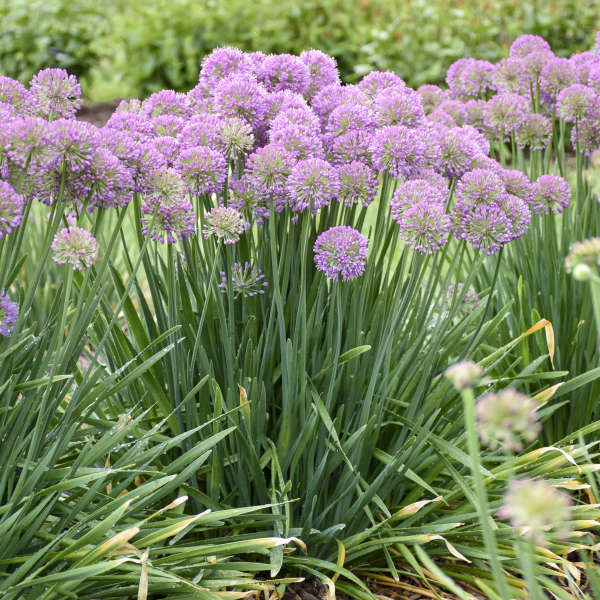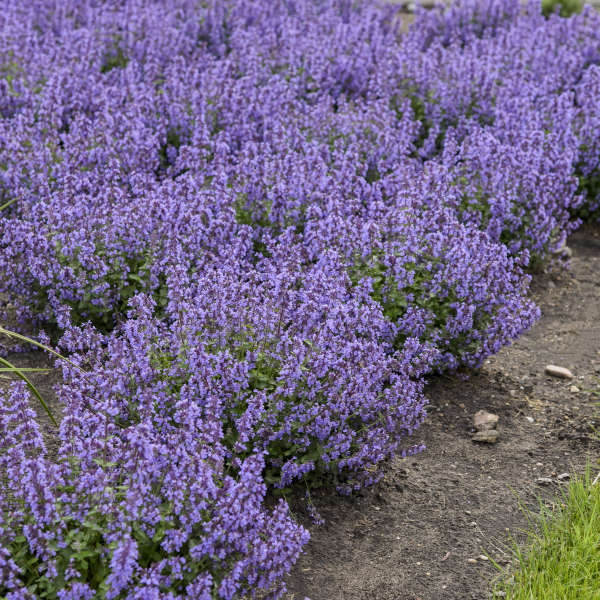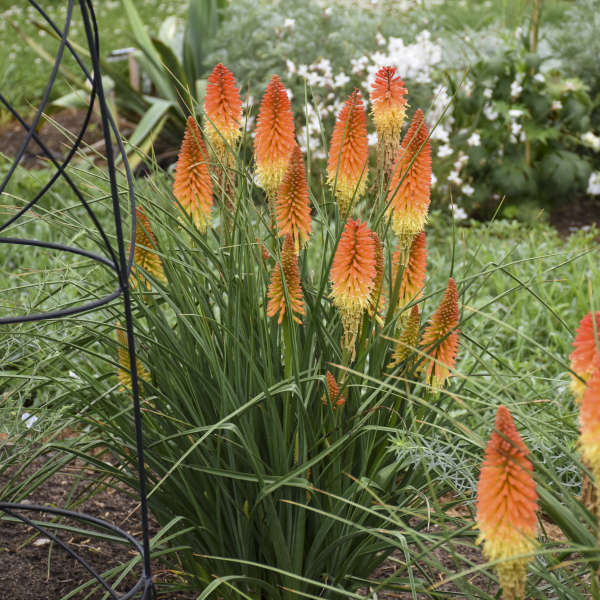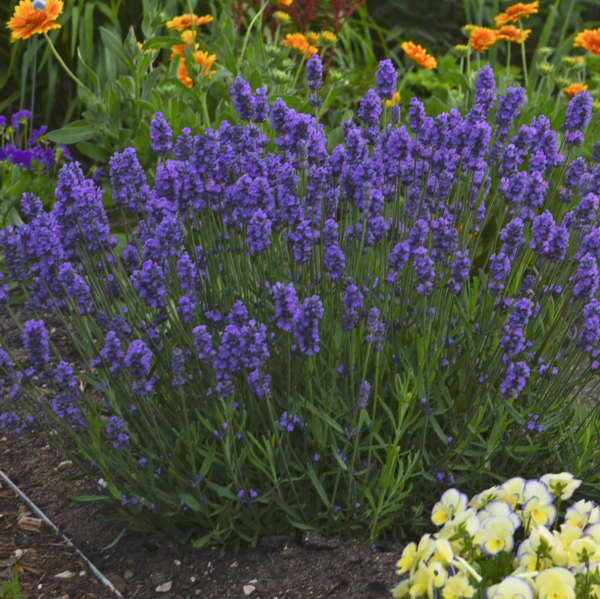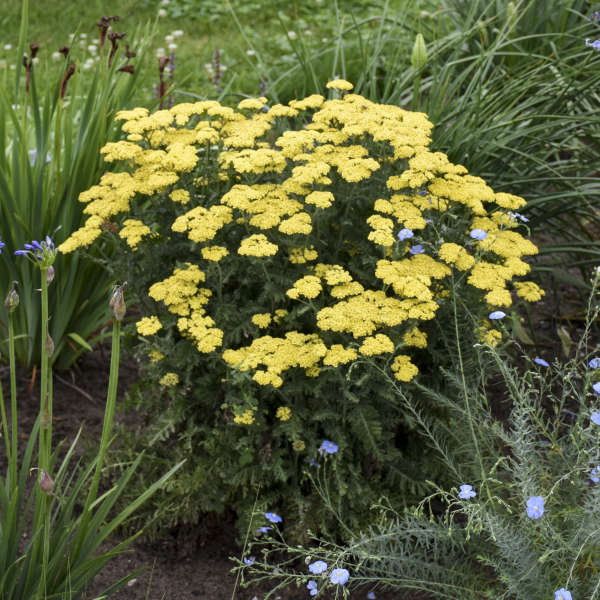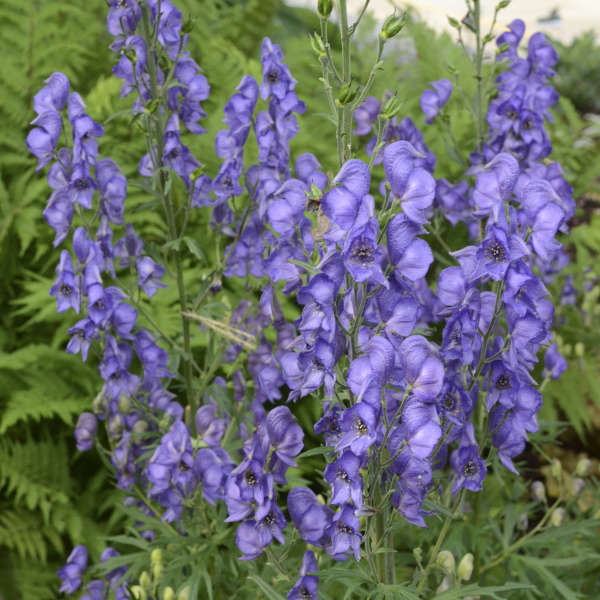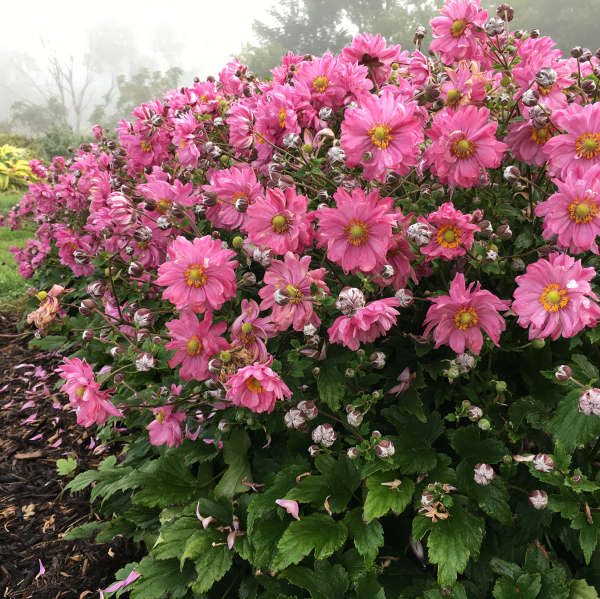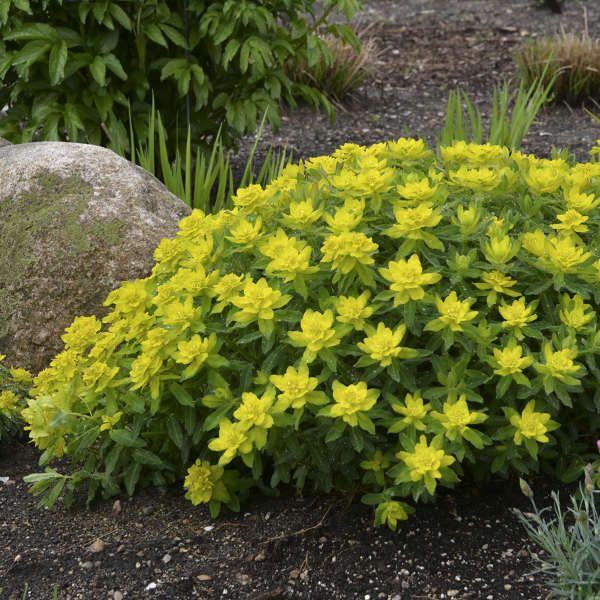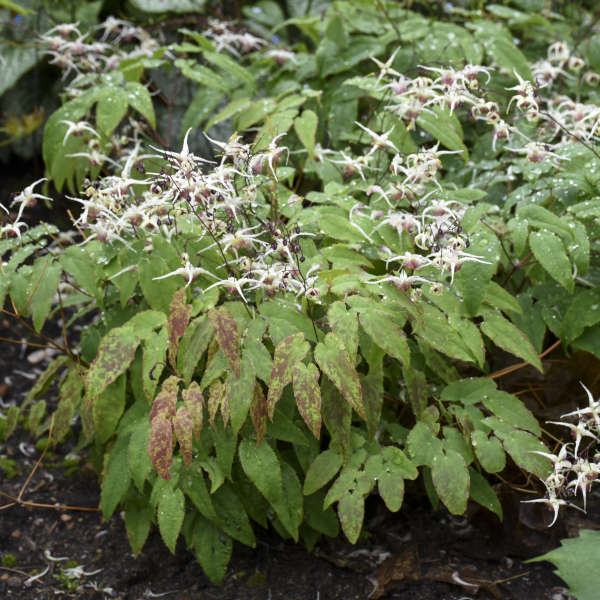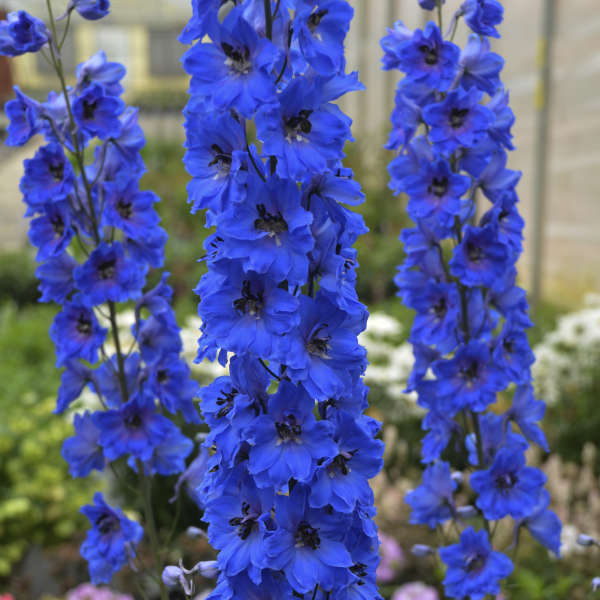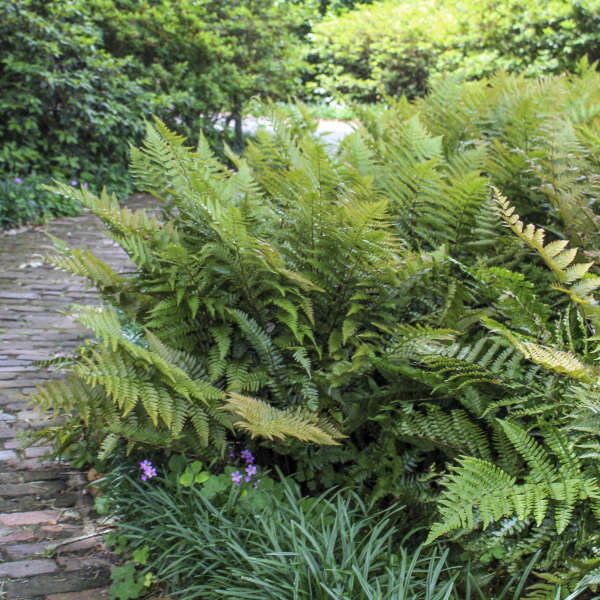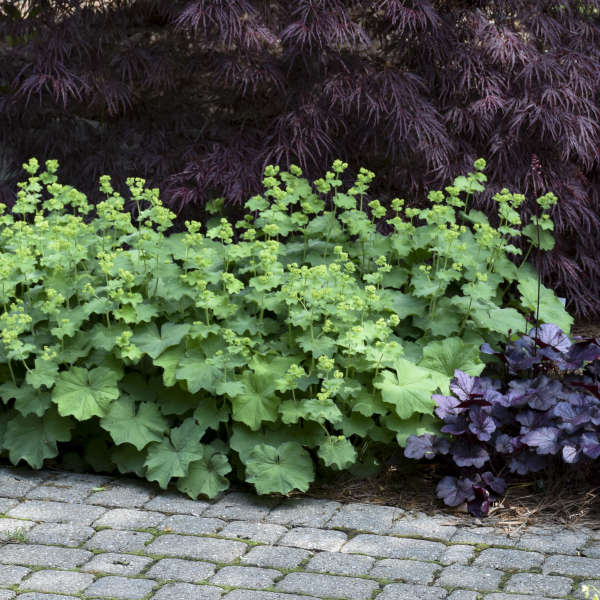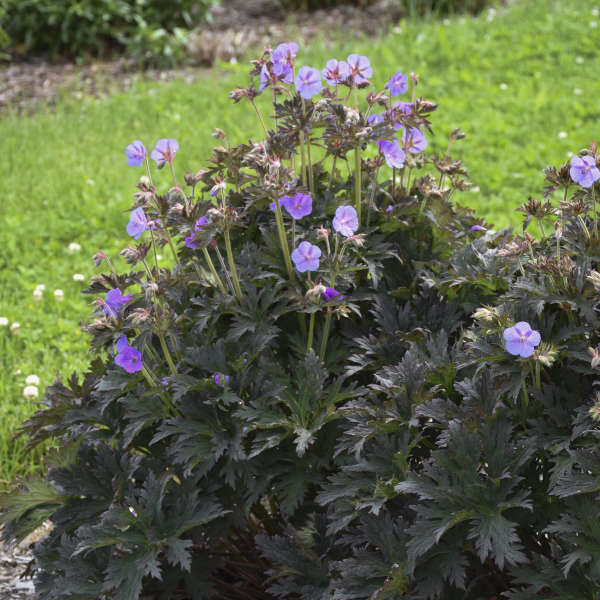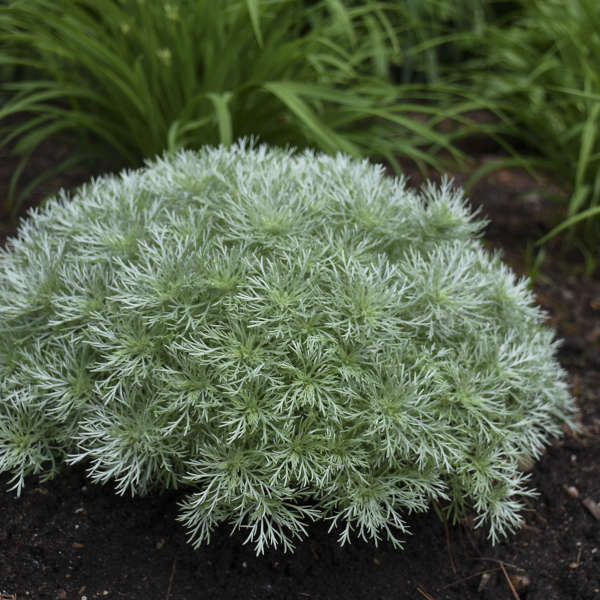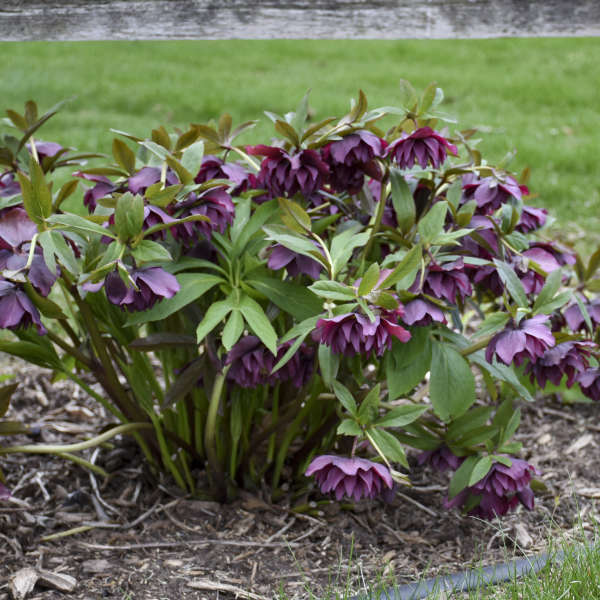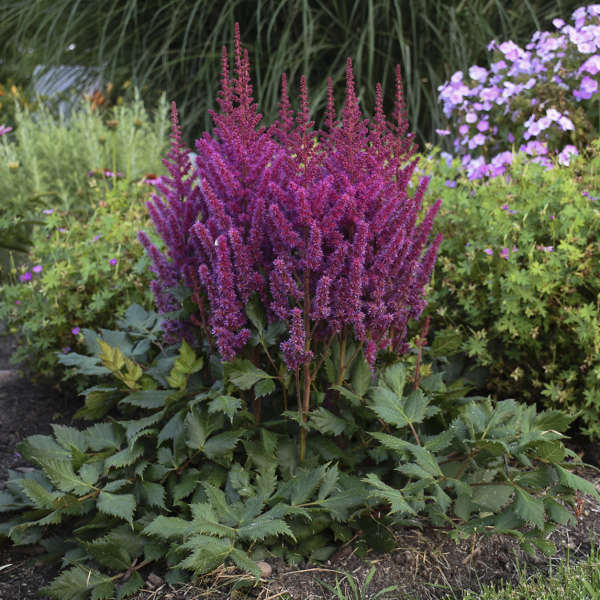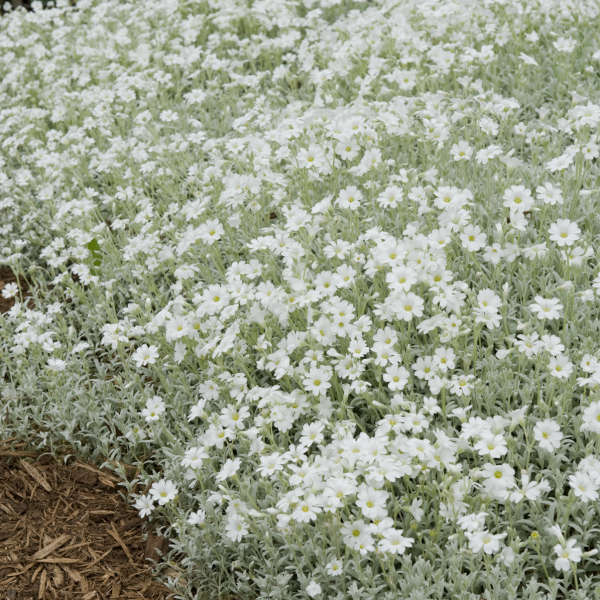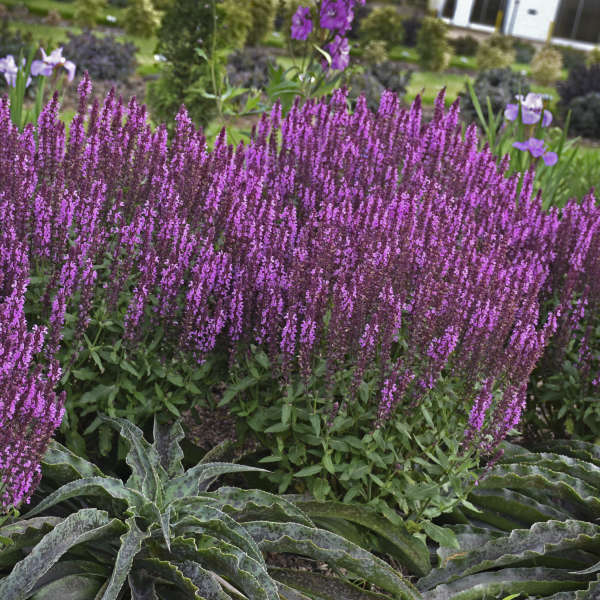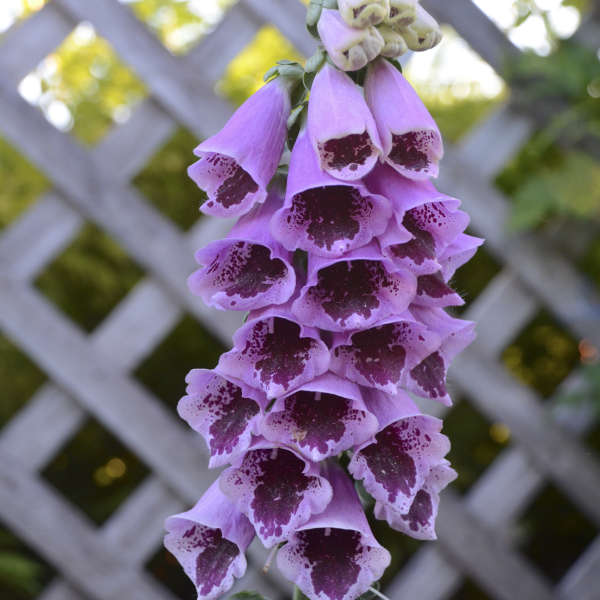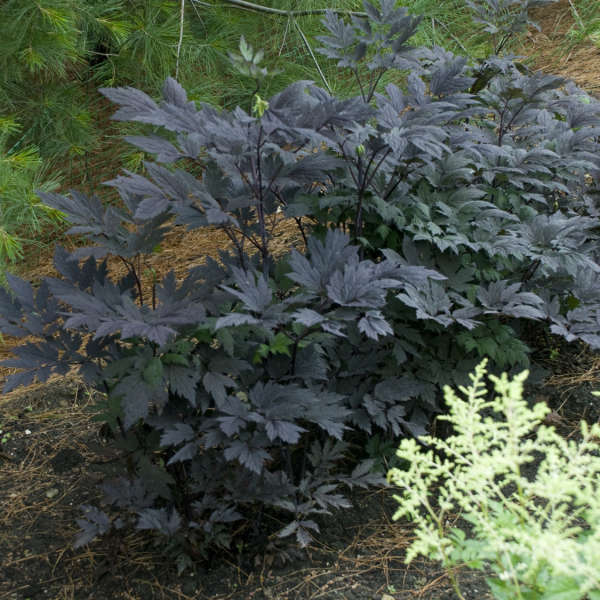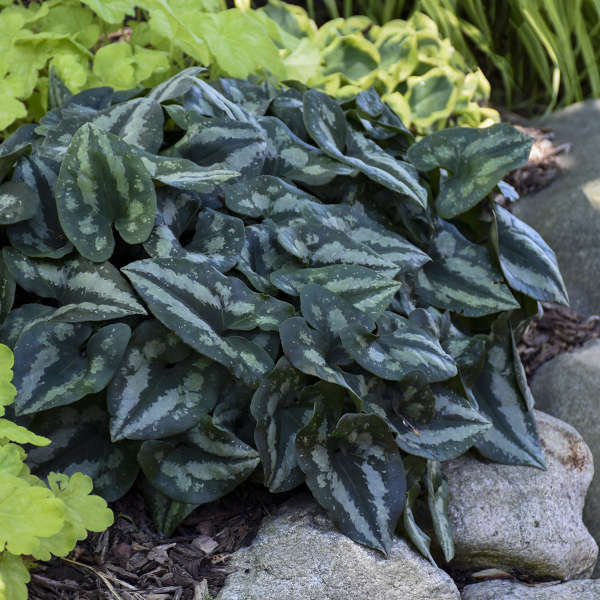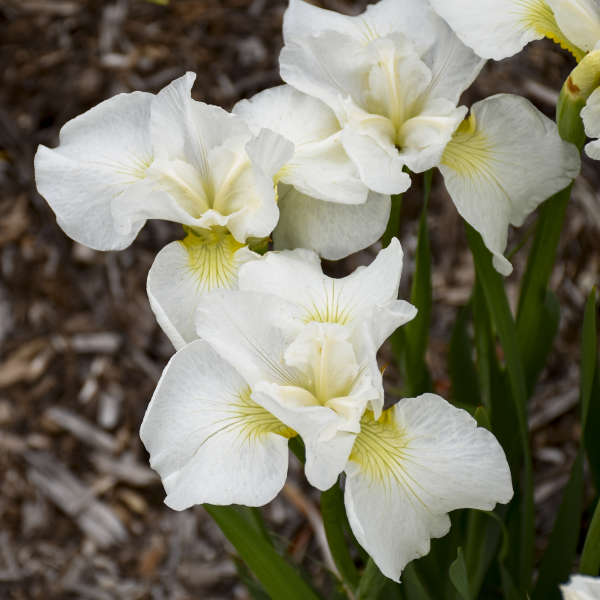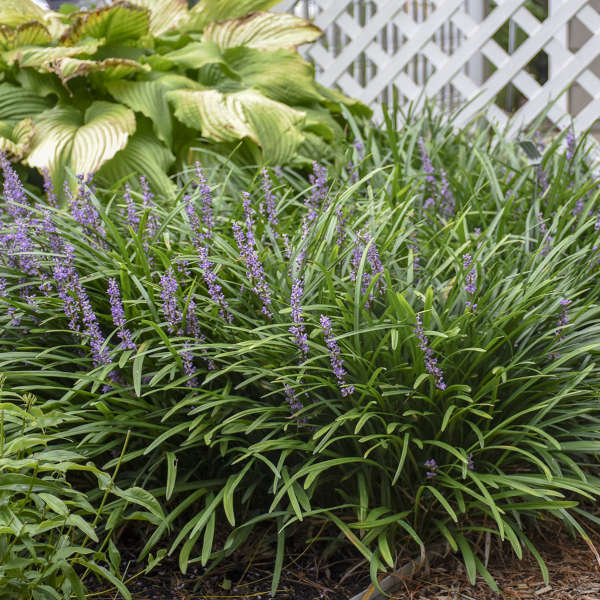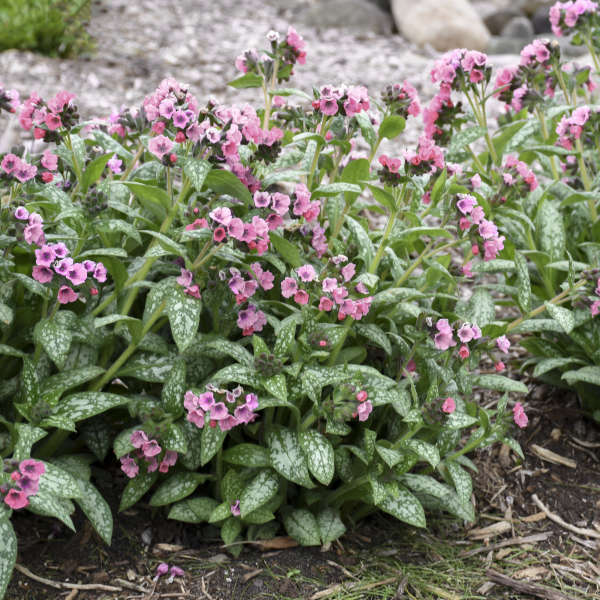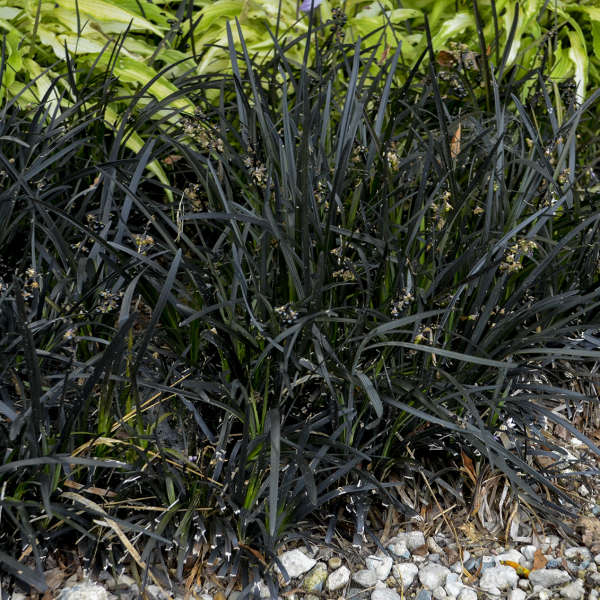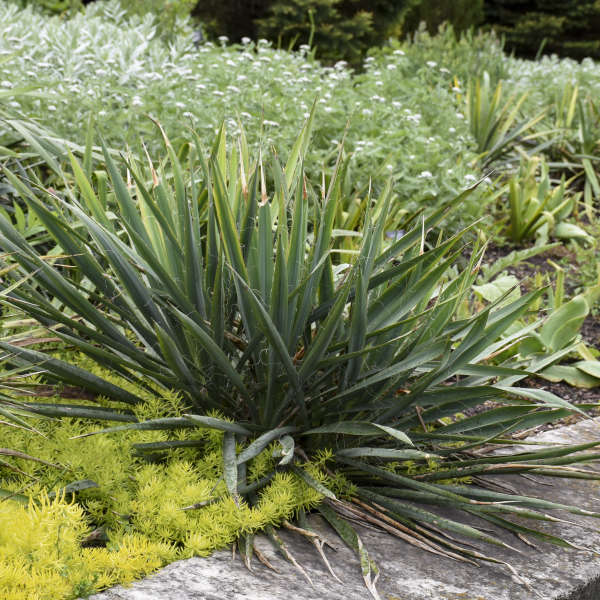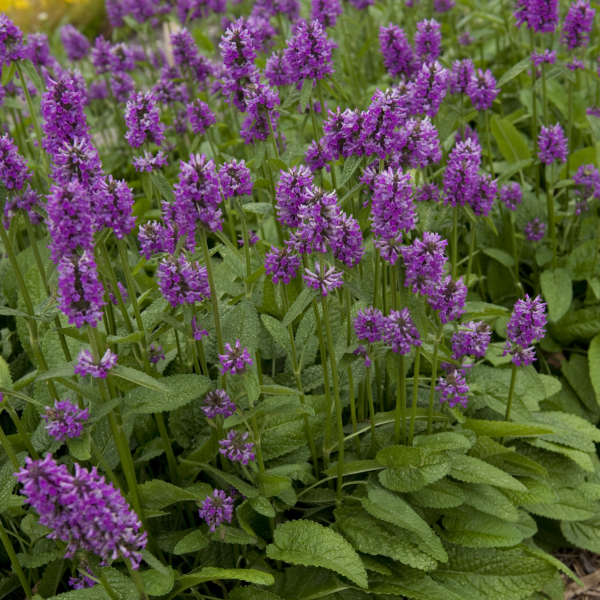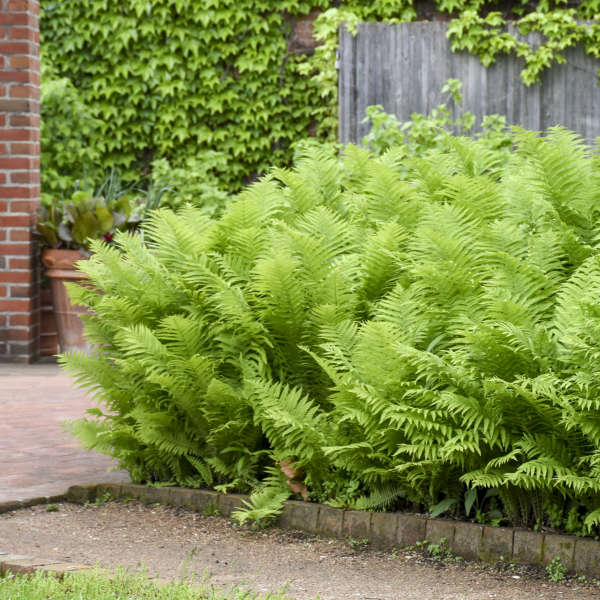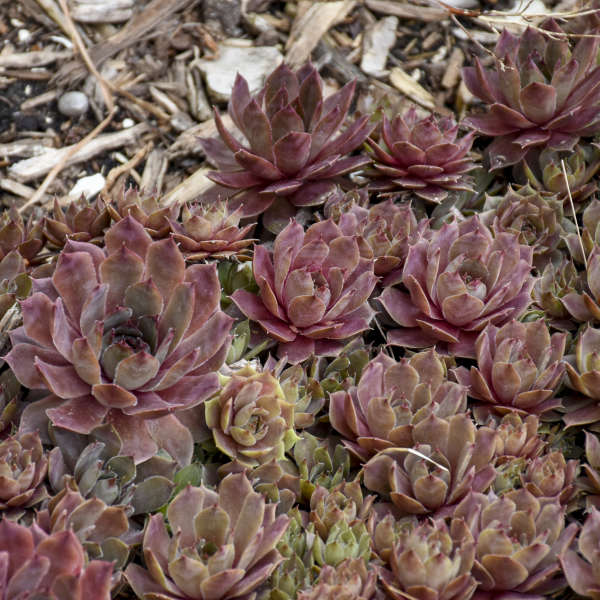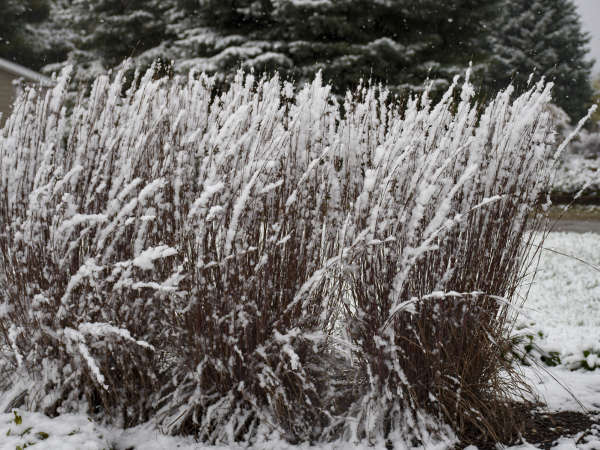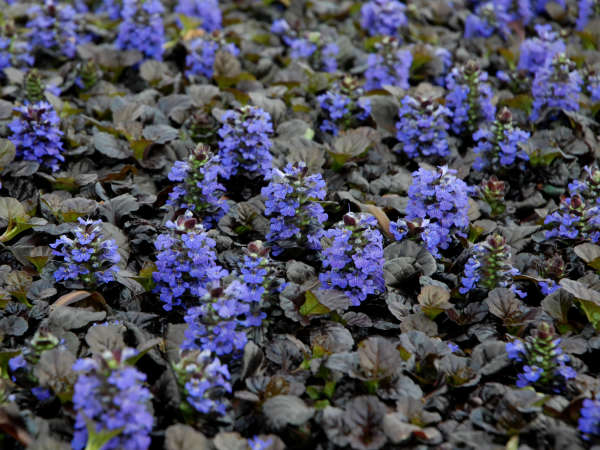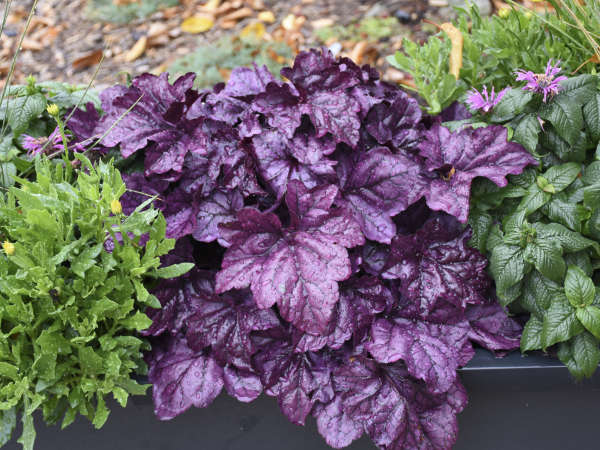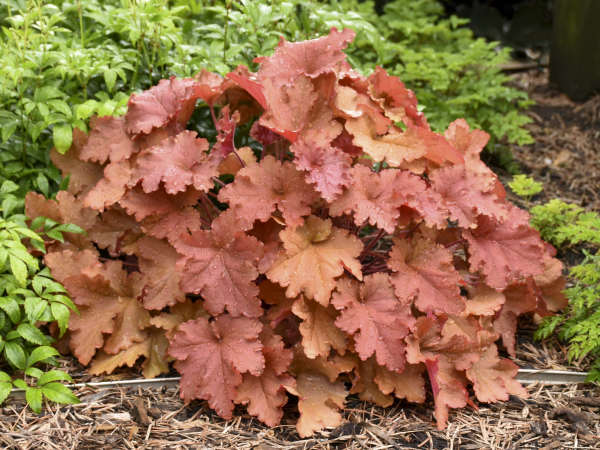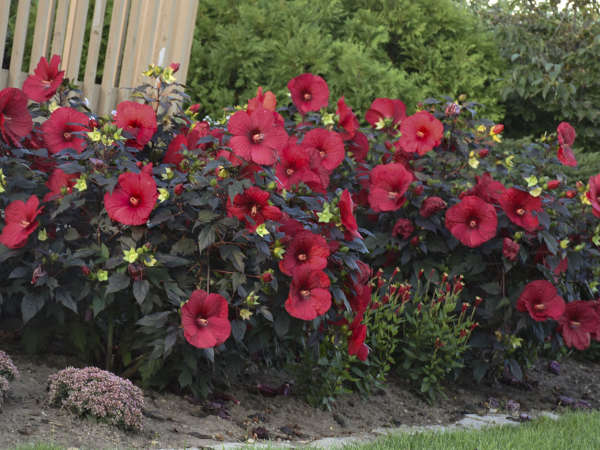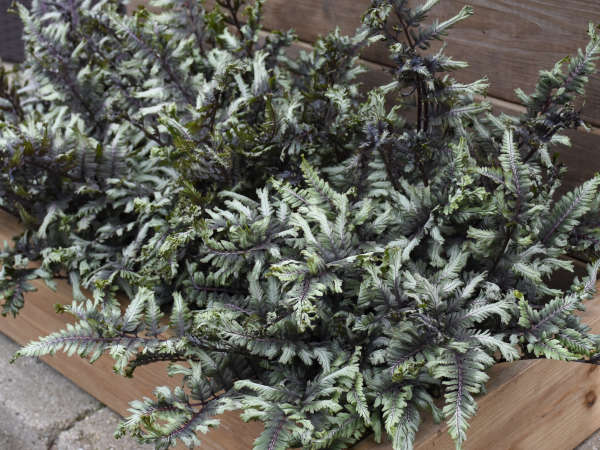Deer and Rabbit Resistant Perennials
-
1.
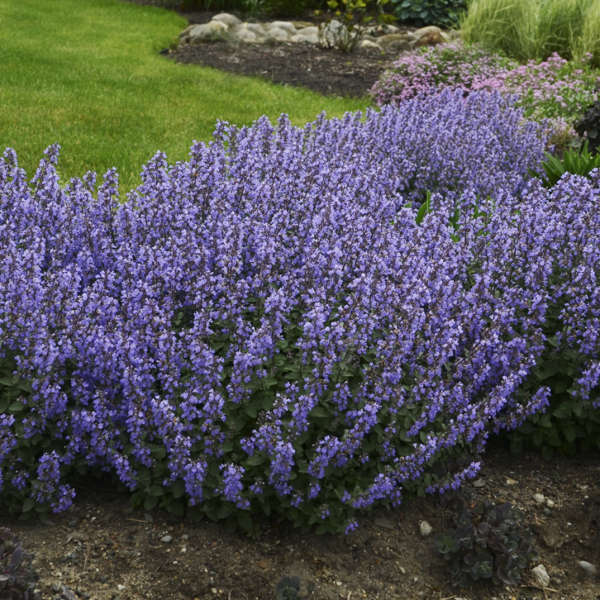
-
2.
Allium (Ornamental Onion)
Onion may be a big part of the human diet, but the flavor is a turn off for the grazers. They'll only touch this plant as a last resort. The flowers, however, attract pollinators!
Full to Part Sun | Zones: 4-8 | Blooms: Mid - Late Summer
Variety Pictured: Allium 'Serendipity'
Learn More

-
3.
Nepeta (Catmint)
This is part of the mint family, so its foliage is fragrant, which deters deer and rabbits. It may, however, attract cats (they might rub against it and smell it).
Full Sun | Zones: 3-8 | Blooms: Early - Midsummer
Variety Pictured: Nepeta 'Cat's Pajamas'
Learn More

-
4.
Kniphofia (Red Hot Poker)
This genus comes in a variety of warm shades like reds, oranges, and yellows, and are generally left alone so you can enjoy the spiky flowers in summer.
Full Sun | Zones: 5b-9 | Blooms: Early - Late Summer
Variety Pictured: Kniphofia PYROMANIA™ 'Backdraft'
Learn More

-
5.
Lavandula (Lavender)
This herb may smell nice to us, but the strong scent scares away deer and rabbits.
Full Sun | Zones: 5-9 | Blooms: Early - Late Summer
Variety Pictured: Lavandula angustifolia Sweet Romance®
Learn More
-
6.
Achillea (Yarrow)
The aromatic leaves of Yarrow are what keep the pests away.
Full Sun | Zones: 3-8 | Blooms: Early - Late Summer
Variety Pictured: Achillea 'Firefly Sunshine'
Learn More

-
7.
Aconitum (Monkshood)
A clue into why this plant is resistant to pests is another common name, Wolfsbane (in addition to other "-banes"). That's right – this plant is poisonous. So deer and rabbits avoid eating it, but you as the gardener should too.
Full to Part Sun | Zones: 4-8 | Blooms: Late Summer - Early Fall
Variety Pictured: Aconitum fischeri
Learn More -
8.
Anemone
You'll have a chance to enjoy these fall-blooming varieties since they probably won't get chewed down throughout the summer.
Full Sun to Part Shade | Zones: 4-8 | Blooms: Late Summer - Early Fall
Variety Pictured: Anemone FALL IN LOVE™ 'Sweetly'
Learn More

-
9.
Euphorbia (Spurge)
If you ever cut one of these plants, you'll notice a white sap that oozes from the stem. This substance is why deer and rabbit steer clear of these beautiful foliage perennials. The sap may irritate your skin if you are sensitive, so if picking for a bouquet, avoid the bottom of the stems or wear gloves.
Full to Part Sun | Zones: 4-8 | Blooms: Late Spring
Variety Pictured: Euphorbia polychroma
Learn More -
10.
Epimedium (Barrenwort)
Epimedium has some medicinal purposes, so is not toxic to humans (or critters). That being said, it's not high on the list of things that taste good to deer.
Full to Part Shade | Zones: 5-8 | Blooms: Mid - Late Spring
Variety Pictured: Epimedium 'Domino'
Learn More -
11.
Delphinium (Larkspur)
It's rare to find a true blue color for the garden, so how handy is it that deer and rabbits leave Delphinium alone? They also come in purples, whites, and pinks.
Full to Part Sun | Zones: 3-7 | Blooms: Early Summer
Variety Pictured: Delphinium elatum 'Million Dollar Blue
Learn More -
12.
Autumn Fern
Ferns as a group are often left alone by critters. It's a perfect deer and rabbit resistant option for shade.
Full to Part Shade | Zones: 5-9 | Blooms: Grown for Foliage
Variety Pictured: Dryopteris erythrosara 'Brilliance'
Learn More -
13.
Alchemilla (Lady's Mantle)
The fuzzy leaves of this classic green perennial are the turn off to the unwanted critters.
Full Sun to Part Shade | Zones: 3-7 | Blooms: Late Spring - Early Summer
Variety Pictured: Alchemilla mollis
Learn More -
14.
Hardy Geranium
Not to be confused with the red annual Geraniums (Pelargonium), the foliage on Geraniums have a slight scent that smells nice to us but not to deer and rabbits.
Full Sun to Part Shade | Zones: 4-8 | Blooms: Early - Late Summer
Variety Pictured: Geranium 'Boom Chocolatta'
Learn More
-
15.
Artemisia
Deer and rabbits tend to avoid silver leaved plants, but that's probably because they don't like the fuzzy texture of the foliage.
Full Sun | Zones: 3-7 | Blooms: Grown for Foliage
Variety Pictured: Artemisia schmidtiana 'Silver Mound'
Learn More -
16.
Helleborus (Lenten Rose)
Not all deer and rabbit resistant plants are toxic, but Lenten Rose definitely is. It's toxic to humans, too. Normal handling is absolutely safe, just make sure not to ingest the plant.
Full Sun to Full Shade | Zones: 4-9 | Blooms: Late Winter - Early Spring
Variety Pictured: Helleborus WEDDING PARTY™ 'True Love'
Learn More
-
17.
Astilbe
Deer and rabbits don't like the taste of Astilbe leaves. We're not complaining! That just means we get to enjoy the flowers of this versatile (sun or shade) perennial.
Full Sun to Full Shade | Zones: 4-9 | Blooms: Mid - Late Summer
Variety Pictured: Astilbe chinensis 'Visions'
Learn More -
18.
Cerastium (Snow in Summer)
The woolly texture of the leaves are a natural deterrent to unwanted critters.
Full Sun | Zones: 3-7 | Blooms: Late Spring - Early Summer
Variety Pictured: Cerastium tomentosum 'Yo Yo'
Learn More -
19.
Perennial Salvia
If you rip a Salvia leaf and put it to your nose, you'll notice a minty scent. Not surprising, Salvia belong to the mint family. That same strong scent that seems pleasant to you actually keeps the critters away.
Full Sun | Zones: 3-8 | Blooms: Late Spring - Early Summer
Variety Pictured: Salvia nemorosa 'Pink Profusion'
Learn More

-
20.
Digitalis (Foxglove)
Digitalis has been used to treat heart conditions, but on the whole, the plant is very toxic (which is why the critters stay away). A somewhat ominous common name for this plant is "Dead Man's Bells"--but don't worry, as long as you don't EAT the plant, you can enjoy the wonderful, long blooming flowers.
Full to Part Sun | Zones: 4-9 | Blooms: Early Summer
Variety Pictured: Digitalis purpurea 'Sugar Plum'
Learn More -
21.
Cimicifuga (Black Snakeroot)
This perennial gets left alone in the shade garden because it's considered a poisonous plant.
Full to Part Shade | Zones: 4-8 | Blooms: Late Summer - Early Fall
Variety Pictured: Cimicifuga ramosa 'Hillside Black Beauty'
Learn More -
22.
Asarum (Wild Ginger)
Although the common name is Ginger, this isn't the stuff you eat (that's Zingiber!). This genus is actually toxic.
Full to Part Shade | Zones: (5)6-9 | Blooms: Early Spring
Variety Pictured: Asarum splendens
Learn More -
23.
Siberian Iris
When you're walking by some Iris, you may enjoy that pleasant scent coming from the flowers. That same scent is what drives the critters away--the scent is too strong for their liking.
Full to Part Sun | Zones: 3-9 | Blooms: Early Summer
Variety Pictured: Iris sibirica 'Swans in Flight'
Learn More -
24.
Liriope (Blue Lily-turf)
This is a great option for a perennial groundcover that will be left alone for the most part by deer and rabbits. Although it looks like a grass throughout most of the year, a special surprise is when it blooms in late summer.
Full Sun to Full Shade | Zones: 5-10 | Blooms: Midsummer
Variety Pictured: Liriope muscari 'Big Blue'
Learn More -
25.
Pulmonaria (Lungwort)
The leaves on Lungwort are covered with coarse hair--and deer and rabbits tend to leave "hairy" plants alone.
Full to Part Shade | Zones: 3-9 | Blooms: Late Spring
Variety Pictured: Pulmonaria 'Pretty in Pink'
Learn More
-
26.
Ophiopogon (Black Mondo Grass)
This perennial (not actually a grass) is one of the more deer resistant. It looks like Liriope but in a cool black color.
Full Sun to Part Shade | Zones: 5-9 | Blooms: Grown for Foliage
Variety Pictured: Ophiopogon planiscapus 'Niger'
Learn More -
27.
Yucca (Adam's Needle)
The flowers may not be deer resistant, but the foliage definitely is. Most people like to enjoy this as a foliage interest in their garden anyway.
Full to Part Sun | Zones: (4)5-10 | Blooms: Early - Midsummer
Variety Pictured: Yucca filamentosa 'Excalibur'
Learn More
-
28.
Stachys (Betony)
Like Salvia, this is a member of the mint family. Deer and rabbits tend to leave smelly plants alone.
Full to Part Sun | Zones: 4-8 | Blooms: Early - Midsummer
Variety Pictured: Stachys monieri 'Hummelo'
Learn More -
29.
Ostrich Fern
Ostrich ferns need plenty of space to grow since they are rapid spreaders. They spread by dense underground runners which extend out in all directions, quickly forming colonies.
Full Sun to Full Shade | Zones: 3-7 | Blooms: Grown for Foliage
Variety Pictured: Matteuccia struthiopteris
Learn More -
30.
Sempervivum (Hens and Chicks)
Sempervivum is comprised of one large rosette called the "hen" which sprouts many smaller rosettes around it called "chicks". As the plants age, the "hen" may die out and be replaced by the "chicks". Plants can be divided easily at any time by pulling up some of the "chicks" and replanting them elsewhere.
Full Sun | Zones: 3-8 | Blooms: Midsummer
Variety Pictured: Sempervivum 'Purple Beauty'
Learn More
